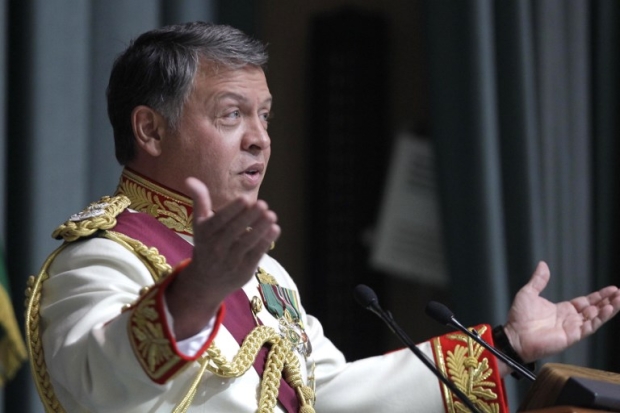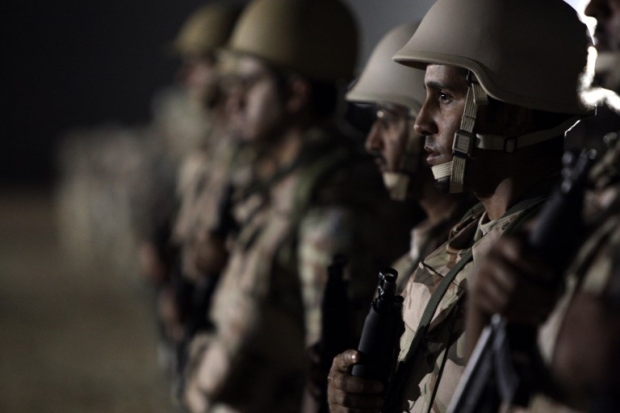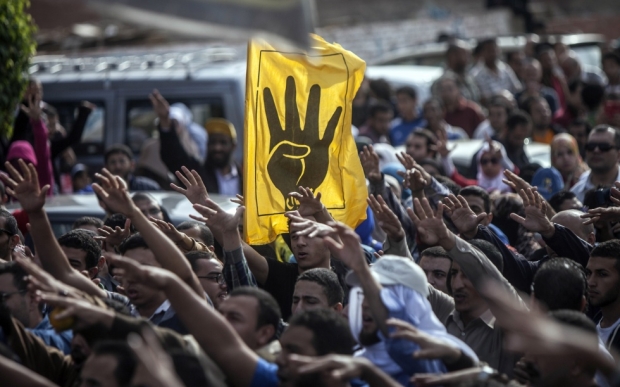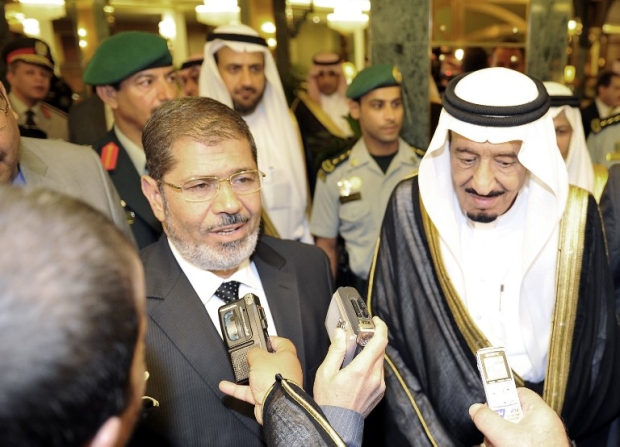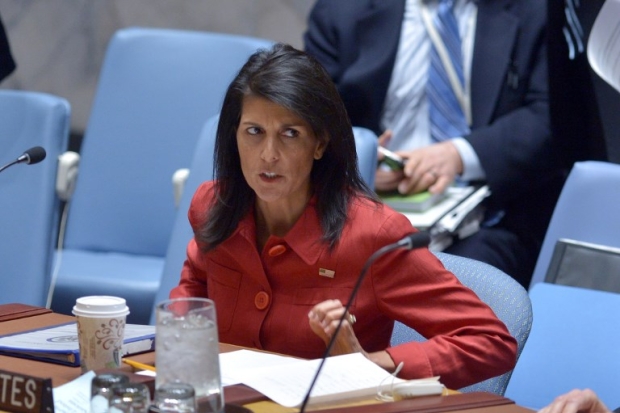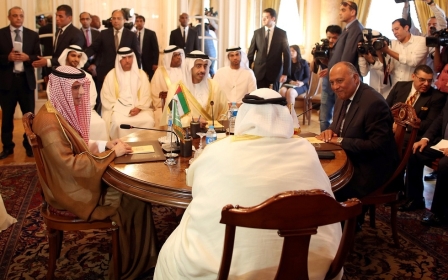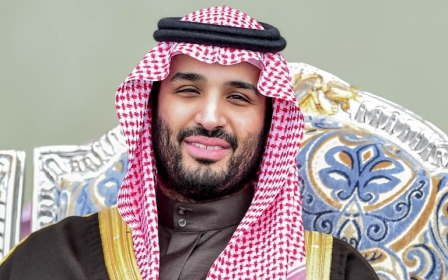
Arab monarchies and the illusion of stability
The Arab Spring was an event that affected Arab republics first and foremost. The regimes of most of the countries which experienced rebellions with lasting results in the Arab world were - at least on paper - republics. Tunisia, Egypt, Syria, Libya and Yemen all claim to run republican regimes.
However, the Arab Spring barely touched the monarchs of the Arab world, and the Gulf was relatively unaffected by this process. That does not mean that the Arab Spring-era protests did not also take place in the Gulf or the larger monarchical map of the MENA region. They did. But they were either comparatively negligible or suppressed by force, as was the case with Bahrain and Oman.
In Oman, from January 2011 onwards, a small demonstration by a group of people demanding socio-economic improvements broke out in the country’s capital Muscat. These protests reached the country’s commercial hub, Sohar, by February. Yet after the forcible suppression and killing of a few demonstrators, these protests swiftly spread to other parts of the country, where they were later put down by the regime.
Though the Omani case was important, the most noteworthy Arab Spring-era waves of demonstrations in the Gulf occurred in Bahrain. And this was also where the pro-Arab Spring camp failed to uphold its integrity.
Later, Iran would make much hay from this situation when a similar bloc began supporting the opposition in Syria. Iran and some of the other actors who opposed the Arab Spring believed that the silence of those countries which had supported regional change in the face of incidents in Bahrain was either a result of these countries having a selective understanding of democratisation, their inconsistency, or policies of sectarianism. Shias, after all, were the majority in Bahrain, and they had formed the backbone of the wave of protests.
How the Gulf broke the Arab Spring influence
Despite such incidents, the Arab monarchs, particularly the dynastic ones of the Gulf, were somehow able to manage the waves of change in the Arab world.
While uprisings in the Arab republics were designed to change regimes, the ones in monarchies seemed to aim to precipitate regime reform
While protests in the Arab republics culminated either in the overthrow of ancien regimes or morphed into fully fledged civil wars, the monarchies weathered the storm either by undertaking some cosmetic constitutional amendments and opening up political space as was the case in Morocco, Jordan and Kuwait, or handing out the state’s largesse to the population, as happened in the Gulf.
To state it differently, while uprisings in the Arab republics were designed to change regimes, the unrest in the monarchies sought to precipitate regime reform.
Beside this initial response, many countries in the Gulf, notably Saudi Arabia, followed a three-pronged strategy aimed at breaking the Arab Spring's influence over their societies:
1. Aid packages and development projects
Firstly, Gulf monarchs sharply increased current spending to accommodate social pressure and stave off popular discontent. The governments of the Gulf states, one after another, presented packages of incentives or bribes to their societies. Just in the two months of February and March 2011 alone, Saudi Arabia announced social welfare packages that were in total worth $130bn.
The more they could render their societies economically dependent, idle and unproductive, the more that they rendered them politically passive
These countries not only announced packages aimed at domestic audiences, but there was also a kind of monarchical solidarity in place, through which the better-off monarchies helped the lesser-off monarchies financially fend off social discontent. This mechanism of solidarity was not only confined to the Gulf region: it was also extended the two non-Gulf Arab monarchies, namely Jordan and Morocco.
In the initial phase of the Arab Spring, Saudi Arabia promised an aid package of $20bn to Bahrain and Oman, prompting some observers to describe it as a “Gulf Marshall Plan”. While extending its defence of monarchical rule to outside the Gulf, to Jordan and Morocco, Gulf Cooperation Council (GCC) Secretary General Abdallatif al-Zayani prematurely announced at the organisation’s summit in Riyadh in May 2011 that it would invite both states to become members, a plan later downgraded to a strategic partnership offer and then again to the offer of economic aid. In December of the same year, the GCC announced that it would fund development projects worth $5bn in both Jordan and Morocco.
The legitimacy of these monarchs now largely came down to the amount of economic rent they were able to distribute, or to the welfare state policies they had put into practice. The more they could render their societies economically dependent, idle and unproductive, the more that they rendered them politically passive.
2. Crackdowns
Secondly, crackdowns on opposition and controls on all social and political groups were carried to an extreme. Even though Arab monarchs were not as successful as Arab republics on this score, they also had structures which mixed the qualities of a police state with those of a welfare state, and this format was put into practice at a maximum level during the uprisings in the Arab world.
Gulf monarchies employed all the coercive and repressive measures of Arab police states while at the same time providing generous social welfare benefits and services
These Gulf monarchies employed all the coercive and repressive measures of Arab police states, like Syria, while at the same time providing generous social welfare benefits and services to their societies. Most of the Arab police-state republics couldn’t afford to implement such welfare policies.
Paradoxically, these monarchs were able to undertake some kind of institutional flexibility and a limited level of socio-political permissiveness while at the same time utilising the tactics and tricks of the Arab police states to their fullest extent.
Saudi Arabia, for example, has dramatically tightened measures against any public meetings or gatherings while at the same time forcefully cracking down on protests occurring in the largely Shia-inhabited eastern provinces.
3. Launch a counter-revolution
Thirdly, the monarchs in question, especially those in the United Arab Emirates and Saudi Arabia, considered this wave of change to be an existential threat and attempted to organise a counter-revolution and anti-Islamist wave on a regional scale.
The Egyptian coup was the greatest achievement of this wave of counter-revolution. The Egyptian coup d'etat was "made in the Gulf" from its planning to its implementation, and we saw the same form of counter-revolution and anti-Islamist wave in Libya.
Monarchical exceptionalism?
This strategy has, in some senses, worked so far. This has led some to assert a monarchical exceptionalism in the face of popular uprisings in the Middle East. The stability of these regimes has largely been taken for granted. It is clear that monarchical regimes had some advantages over their republican peers when it came to weathering the storm of waves of change in the Arab world.
Arab monarchies, family rule and power inheritance were acceptable and weren't perceived by the people as a form of humiliation
Different patterns of political legitimacy between Arab republics and monarchies may provide a partial explanation for this. Arab republics built their legitimacy on an ideological core of pan-Arabism, socialism, and national independence, while deploying democratic tools such as constitutions and elections to have a facade of legitimacy.
That is why, since the 1990s, with the erosion of this ideological core and with the emergence of the phenomenon of family rule and power inheritance, the legitimacy of the Arab republics has suffered from a severe legitimacy crisis.
In contrast, in Arab monarchies, family rule and power inheritance were acceptable and weren't perceived by the people as a form of humiliation. In fact, the legitimacy of family rule has been strong, since these family lines precede even the establishment of the states in the Gulf and they have formed the core of the state and nation building in this area, thus leaving states and families intimately interlinked.
In this respect, even calling King Mohammed VI of Morocco "Commander of the Faithful", or the kings of Saudi Arabia "Custodians of the Two Holy Mosques" - in reference to the most important shrines in Islam, in Mecca and Medina - is not an ideological endeavour. Rather, they are an attempt to derive legitimacy from religious traditions and customs.
Fears outgrow reality
But these advantages cannot shield these regimes from popular discontent for long. Therefore, Arab Spring-era strategies employed by Arab monarchies only work to some extent. And by now, they have run their course.
Indeed, the fact that these actors are still investing so much in these strategies may lead them to backfire. But there is not much evidence that some of the actors in question sufficiently understand the threats or challenges of the post-Arab Spring period. The fears resulting from the Arab Spring are still holding these actors hostage.
It is obvious, however, that this new era comes with its own new threats and challenges. The common fear that all these actors had during the Arab Spring era was political Islam. Even though these actors had different prescriptions for how Islam should relate to politics and how political Islam should relate to the state, they were united on the issue of the suppression of political Islamic groups, which threatened to obtain political power through democratic channels.
The size and influence of the Muslim Brotherhood-affiliated Al-Islah party, founded in 1974, in the UAE has been limited. In fact, even Abu Dhabi Crown Prince Mohammed bin Zayed, who is paranoid about and prone to exaggerating the Brotherhood's power and influence, and is hell-bent on destroying the organisation across the region, contended that the UAE contained up to 700 Brotherhood members, according to a US Department of State diplomatic cable dated in 2004.
Even now, it seems plausible that the size of the Emirati Muslim Brotherhood remains within the range of hundreds, not thousands. Its activities - pushing back the Westernisation of society and culture and imbuing the younger generation with Islamic moral codes - have largely been confined to social, cultural and educational fields rather than political ones.
Comparing the marginal level of threat that the Muslim Brotherhood poses to the political authority of the UAE to the tens of billions of dollars that the UAE has spent fighting the organisation is perplexing. From bankrolling the coup in Egypt and, mainly with Saudi Arabia, keeping the Sisi regime afloat to fighting political Islamic forces in Libya, Yemen, Palestine, and the Gulf, the UAE has wasted billions of dollars. By doing so, the UAE isn’t fighting a real threat, rather it is trying to suppress a popular trend.
Political Islam, particularly the Muslim Brotherhood, poses an even lesser threat to Saudi Arabia. As an organisation, the Brotherhood doesn’t have a large presence - and consequently much power to mobilise - in Saudi Arabia. In fact, conscious of Saudi’s concerns, Mohamed Morsi's government in Egypt tried hard to alleviate these concerns. Upon acquiring the power, the first country that Morsi called and visited was Saudi Arabia.
So why did Saudi Arabia become such a sworn enemy of the Muslim Brotherhood? It seems that the threat wasn’t the Brotherhood’s organisational capacity in the kingdom, but its power to set forth a new and more attractive model defining the nature of relations between Islam, political power and legitimacy.
It was political Islam’s ability to lead the regional transformation in the early phase of the Arab Spring that was so alarming for Saudi Arabia. Clearly, the Brotherhood and the kingdom represent two different models when it comes to the relations between Islam and political authority.
Why did Saudi Arabia become such a sworn enemy of the Muslim Brotherhood?
By upholding Islamic tenets, traditions and customs, the Saudi royal class has pushed the people out of the equation when defining and deciding on the source of legitimacy of political power. Its ruling philosophy thus far has been premised on the binary choices of Islamic tenets and popular legitimacy.
The Muslim Brotherhood has presented a different model in which the ruling class is expected to be equipped with both religious legitimacy and Islamism on the one hand, and popular legitimacy and democracy on the other. The Muslim Brotherhood’s conflation of religion and popular legitimacy or Islam and democracy is exactly what threatens the Saudi regime.
To put it differently, when the Muslim Brotherhood was perceived to be largely a socio-religious group focused on Islamising societies between 1950 and the late 1980s, Saudi Arabia, alongside other Gulf countries, saw a partner in the Brotherhood. But whenever the Brotherhood transitioned from being just a socio-religious group to a political actor at the regional level, advancing a different vision of politics and of state-society-religion relations, as has been the case since the 1990s, Saudi Arabia started to see the group through hostile lenses.
A critical moment in this respect was 1994 when the International Organisation of the Ikhwan-i Muslimin declared its support for political reform, democratic governance, peaceful transition of power and women’s rights.
Saudi Arabia perceived the declaration as posing a major threat to its political authority and, from this moment on, the nature of relations between Saudi Arabia and the Brotherhood has deteriorated: if people embrace this democratic Islamic model, the Saudi model of absolutist monarchy becomes redundant and out of date.
The Brotherhood model still poses a conceptual challenge to Saudi Arabia. But this conceptual challenge won't be operational anytime soon and its risk pales in comparison with the real threats that Saudi Arabia faces in the region.
Greater threats on the horizon
Saudi Arabia’s anti-Islamist agenda, particularly directed at mainstream Islamists, is making itself geopolitically fragile and weakening it in its rivalry with Iran. Moreover, the inclusion of opposition to Turkey - and the closure of Turkey's base in Doha - on the 13-item list of demands sent to Qatar will only deepen the dilemmas emerging in Saudi regional policies.
Saudi Arabia’s anti-Islamist agenda, particularly directed at mainstream Islamists, is making itself geopolitically fragile and weakening it in its rivalry with Iran
The kingdom must carry out a rational analysis and reorder priorities. Geopolitically, Iran's regional ambitions are the biggest threat to Saudi Arabia. This is not only a foreign policy issue for the Saudis, but also a security issue that directly affects their domestic situation as well.
There is a large Shia population which Iran could address and mobilise in the eastern provinces of Saudi Arabia. Saudi Arabia’s ill-treatment of this population only strengthens Iran’s ability to appeal to this section of the Saudi population. The more Saudi Arabia invests in repressive measures in this part of the country, the more politicised and sectarian their grievances will become, hence providing opportunities for Iran to gain influence over them.
In addition, while the partition scenario the UAE is pushing in Yemen is gaining steam each passing day, Saudi Arabia has not yet even managed to secure its border with Yemen properly. Moreover, despite the devastation of war and numerous massacres, the Houthis have not been defeated yet.
If the kingdom were able to pursue a more sophisticated foreign policy, the Muslim Brotherhood-affiliated Islah Party in Yemen should naturally be more of a partner to the Saudis than a threat. Likewise, it is unlikely that the Saudis will be able to get results by making both the Shia majority and political Islamists in Bahrain into enemies. However, Al Minbar, which has a relationship with the Muslim Brotherhood, is represented in Bahrain’s parliament.
'Hit both sides'
The kingdom's geopolitical fragility coincides with a period in which a great change is being experienced in the structure of power and power transition in Saudi Arabia. The post of king has always horizontally shifted between the sons of King Abdulaziz, the founding king of Saudi Arabia. This is changing now.
With the appointment last month of Mohammed bin Salman as crown prince, political power will be able to change hands vertically from now on. In place of a competition between sons, a competition between grandchildren is now taking place, inviting many complications and challenges.
Situating this background within the framework of the recent intra-monarchical feud which pits the Saudi-led country of four against Qatar, it seems that at the end of this crisis, neither Saudi Arabia, nor the UAE, nor Qatar will gain any major concessions from one other.
Instead, the US will obtain concessions from all of them. As a matter of fact, when she was asked on 28 June about the US position on the crisis, the US ambassador to the UN, Nikki Haley, told the House Foreign Affairs committee that the US “should take it as the opportunity that it is and hit both sides".
Goodbye stability
So both Qatar and Saudi Arabia will have to be more open to US demands. As a result of this crisis, the common front which the Saudis want to establish against Iran will be dispersed and Arab republics as well as Arab monarchies will end up more fragile.
Saudi Arabia has had a golden opportunity to play the leading role in the Arab world at a time when other major Arab countries are in disarray. But it chose to co-lead, with the UAE, the authoritarian status quo camp, which is limited in terms of its composition of countries and influence. Not only did the Saudi-led camp fail to rally more Arab or Islamic countries to support its bid to isolate Qatar, but it has also failed to impose its will on this small country.
If Qatar refuses to grant this camp any major concessions, the reputational damage for the Saudi-led bloc will be even more severe. As the primary feuding parties, barring Egypt, are all members of the GCC, the GCC will emerge from this crisis significantly weakened, if not finished in all but name.
Given the predominance of Saudi Arabia over the GCC, the weakening of the organisation will mean a major loss of power for Saudi foreign policy. On top of this, the more the adjective ‘crisis’ is affixed in front of the name Gulf, the more this sub-region will be seen through the same prism of the chaotic and crisis-ridden Middle East and no longer an island of stability. This will have implications on the Gulf’s security, stability and prosperity.
And more broadly, the longer this crisis lingers on, the more likely it is that we will witness the end of monarchial exceptionalism in the region - and the illusion of monarchical stability shattered.
- Galip Dalay works as a research director at al-Sharq Forum and senior associate fellow on Turkey and Kurdish Affairs at the Al Jazeera Centre for Studies.
Opinions expressed in this article are author’s own and do not necessarily reflect the editorial policy of Middle East Eye.
Photo: A handout picture provided by the Saudi Royal Palace on 4 December 2016 shows Saudi King Salman (C) sitting between UAE Prime Minister Sheikh Mohammed bin Rashid al-Maktoum (C-L) and Crown Prince of Abu Dhabi, Sheikh Mohamed bin Zayed al-Nahyan (C-R) during a ceremony in Abu Dhabi. (AFP)
This article is available in French on Middle East Eye French edition.
Middle East Eye propose une couverture et une analyse indépendantes et incomparables du Moyen-Orient, de l’Afrique du Nord et d’autres régions du monde. Pour en savoir plus sur la reprise de ce contenu et les frais qui s’appliquent, veuillez remplir ce formulaire [en anglais]. Pour en savoir plus sur MEE, cliquez ici [en anglais].



